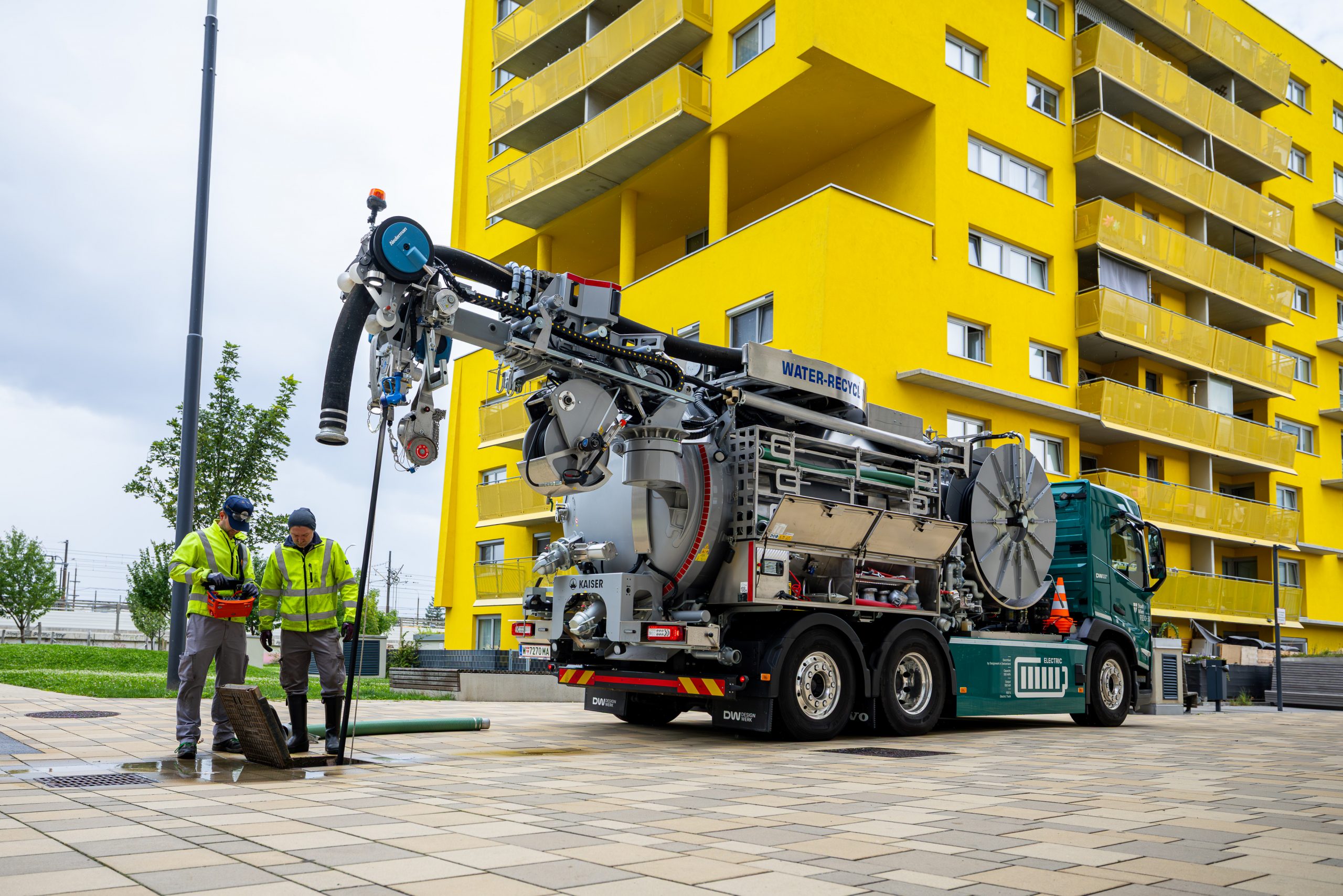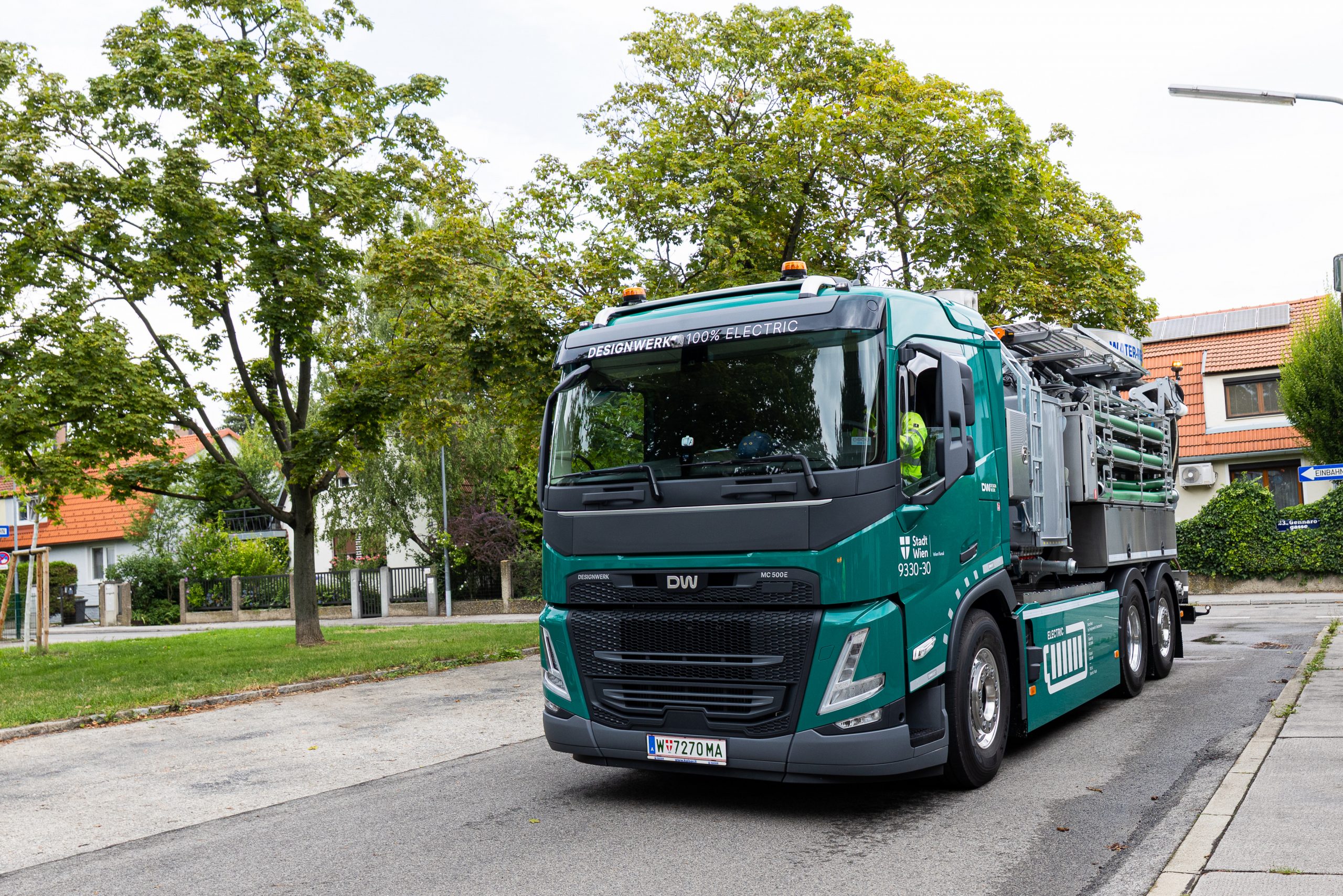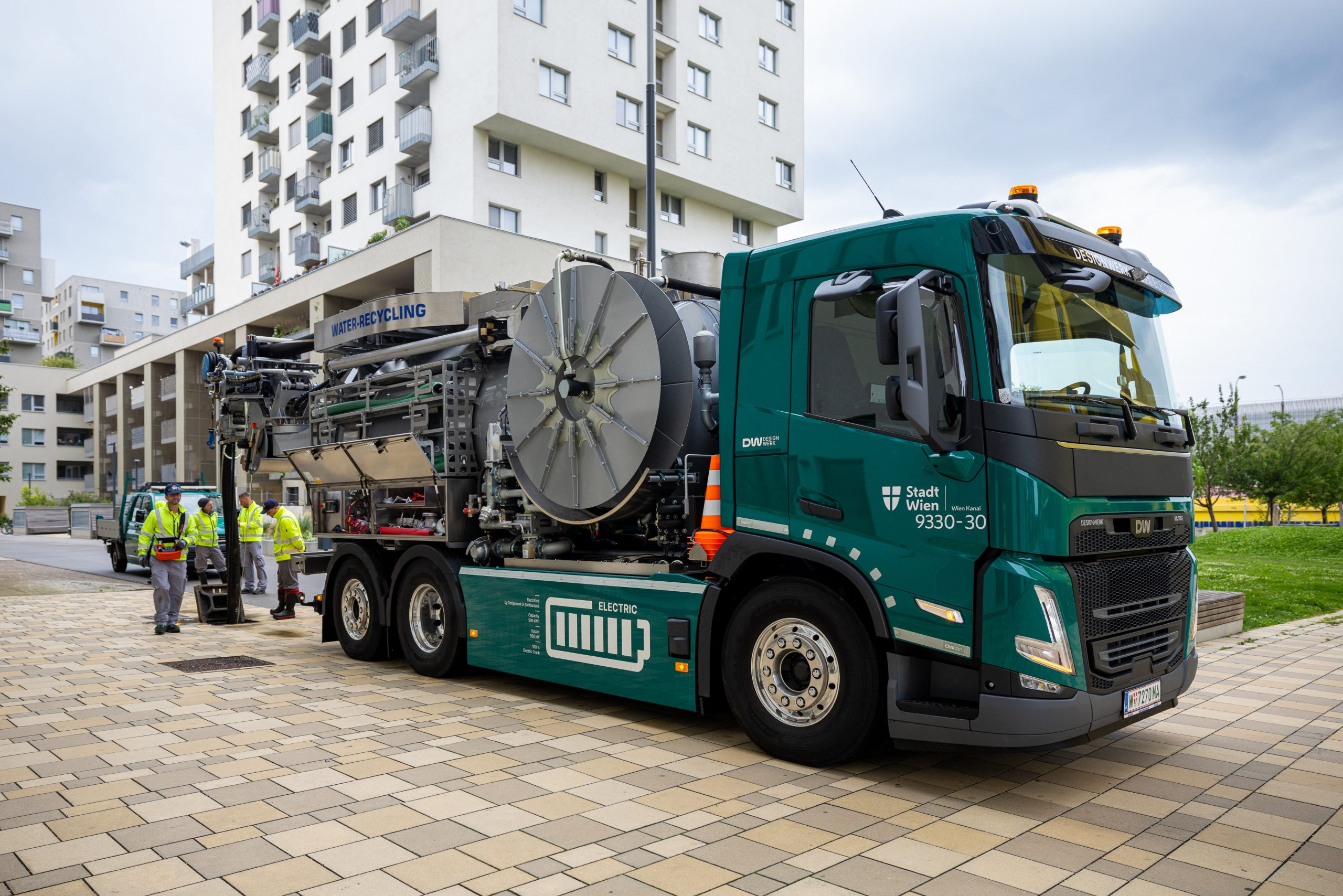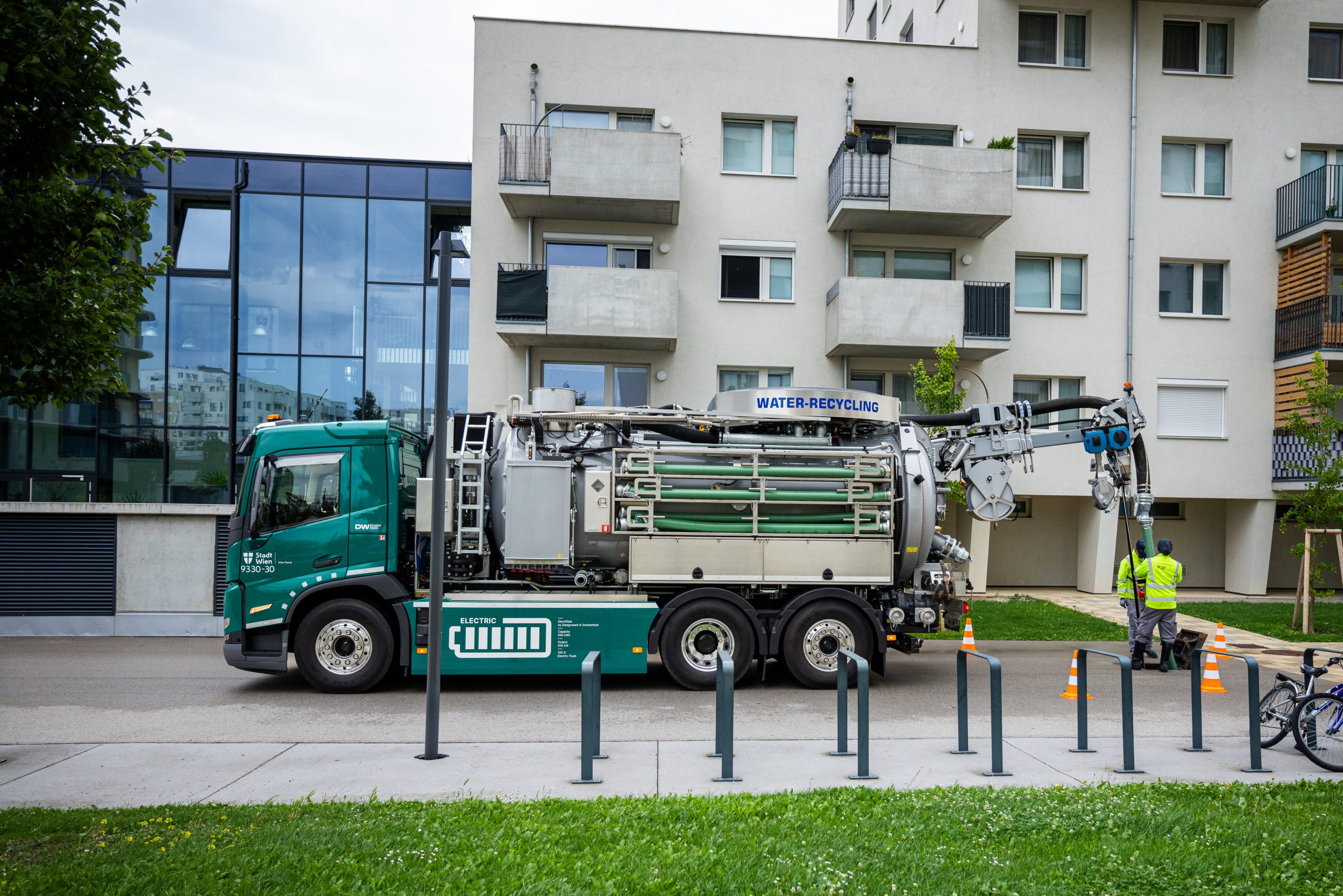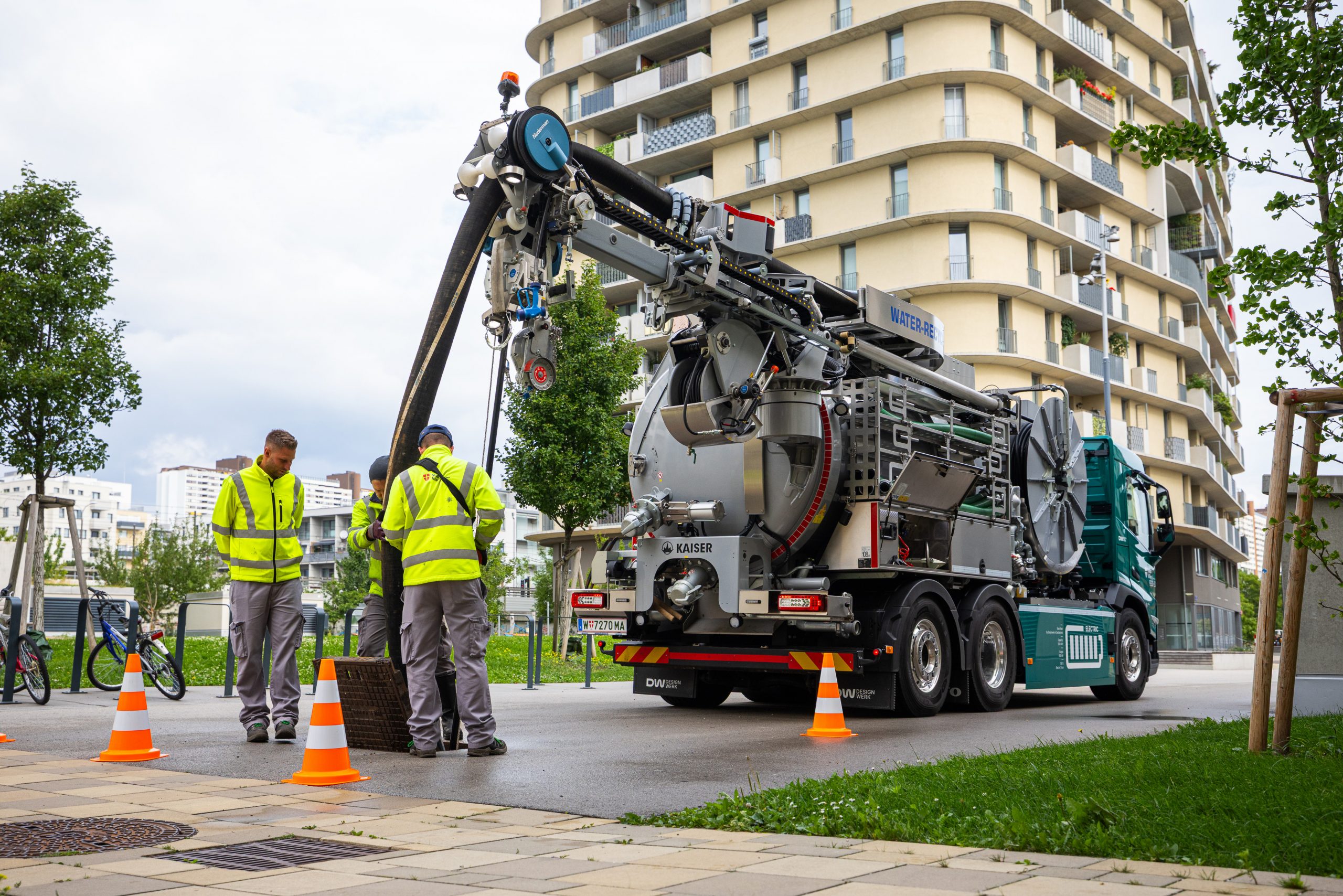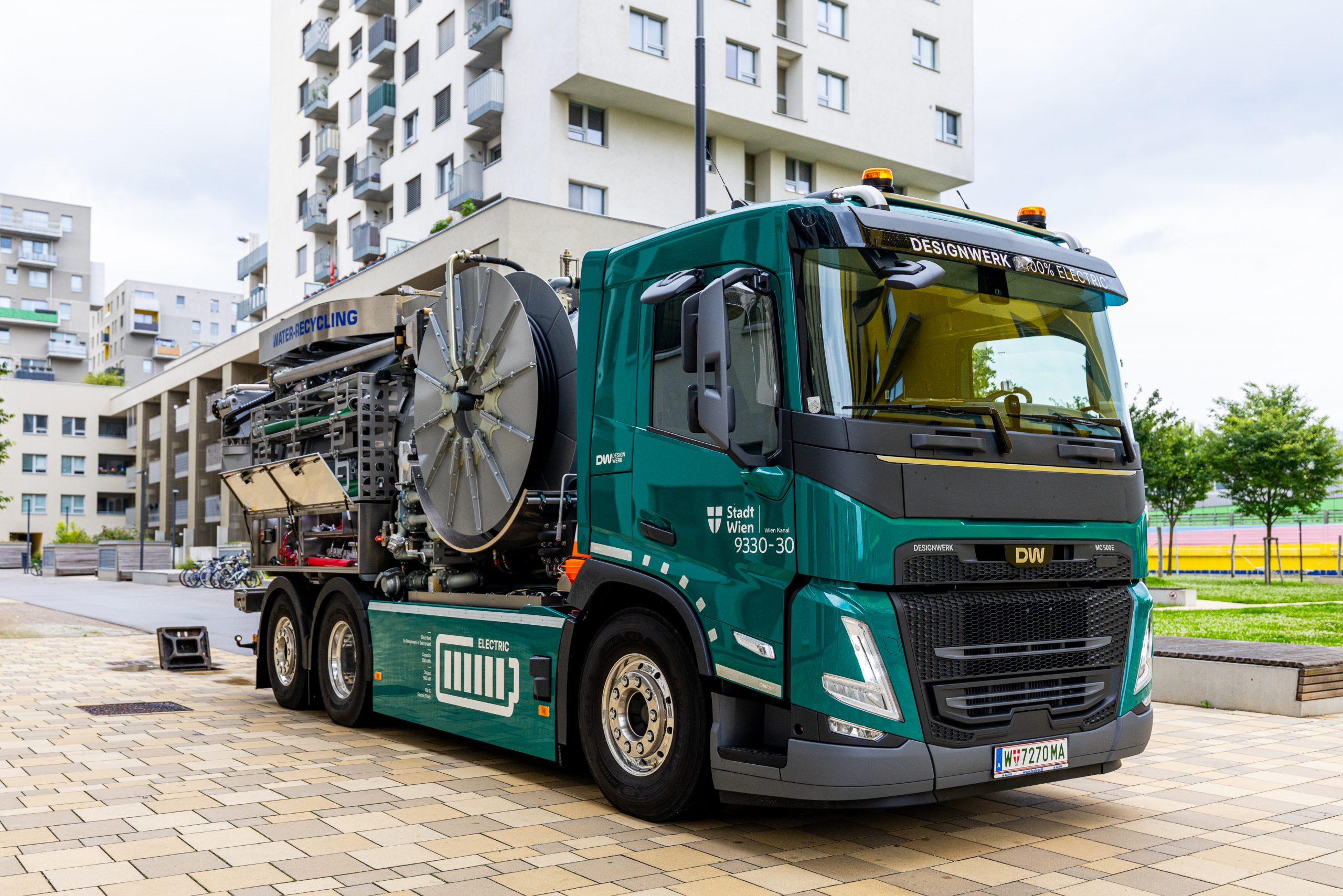"E-FLUSH" in Action: This Electric Truck Cleans Vienna's Sewers

The latest cleaning truck from Wien Kanal impresses with several advantages. It not only saves water but also reduces noise and increases efficiency at work. According to the announcement, the vehicle can save up to 265 kilograms of CO2 daily. Climate Councilor Jürgen Czernohorszky (SPÖ) emphasizes that this measure improves quality of life by reducing noise.
Innovative Water Recycling for More Sustainability
A key feature of the new cleaning vehicle "E-FLUSH" is the water recycling system. The extracted material, which contains water, gravel, and sediments, is processed directly in the vehicle. The liquid components are separated from the solid debris and returned to the water tank. This recycled water is then used for high-pressure cleaning of the sewers.
Andreas Ilmer, Director of Wien Kanal, explains: "This eliminates the time and resource-intensive extraction of fresh water from hydrants. This is a huge advantage, especially in narrow streets." This system can save up to ten cubic meters of water daily.
Noise Reduction Through Improved Engine
Another positive feature is the noise reduction. By eliminating the combustion engine, the noise level during canal work is reduced by about 80 decibels. This is intended not only to increase efficiency but also to reduce the burden on residents during night work. Wien Kanal hopes that this innovation will lead to better acceptance of the work in residential areas.
The electric combination suction vehicle is equipped with an electric motor with 500 kW power (equivalent to 680 hp) and a battery capacity of 508 kWh with 800-volt technology. With a flushing capacity of 300 liters per minute at a pressure of 120 bar, the canal is reliably cleaned. The water tank holds 2,700 liters, and the sludge tank 9,200 liters.
Robots also operating in Vienna's underground
With a pipeline length of more than 2,500 kilometers, Wien Kanal is Austria's largest sewer network operator. Every day, about half a billion liters of wastewater from two million people and 180,000 buildings are safely and environmentally transported to the treatment plant in Simmering.
Around 450 employees keep the sewer network functional and clean. For example, up to 20 tons of deposited material are removed from the sewers daily to ensure the flow to the treatment plant. 99.9 percent of all households in Vienna are connected to the city's sewer network. Nevertheless, the Vienna sewer network grows by up to ten kilometers annually. On average, five kilometers of sewer are rehabilitated underground, almost without excavation. Underground, Wien Kanal's robots are also in operation. Last year alone, they covered more than 200 kilometers in the wastewater labyrinth and inspected the pipes for damage.
(Red)
This article has been automatically translated, read the original article here.






